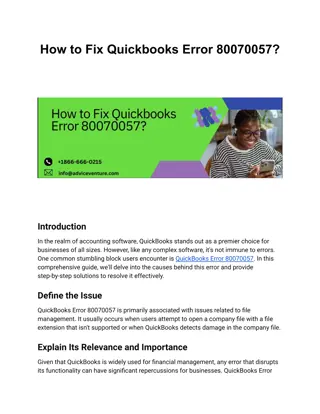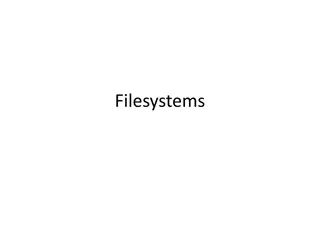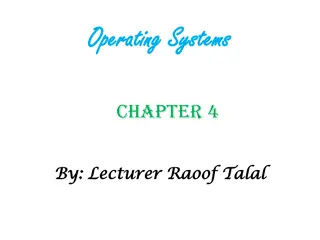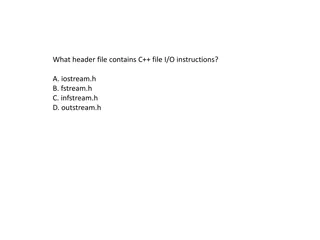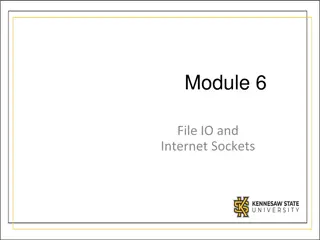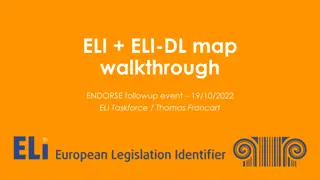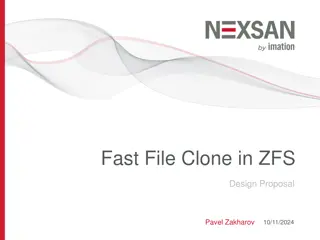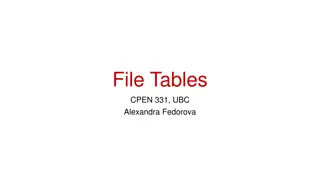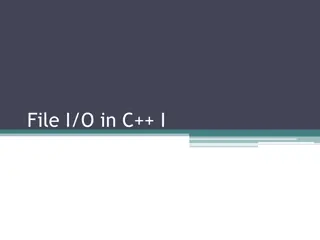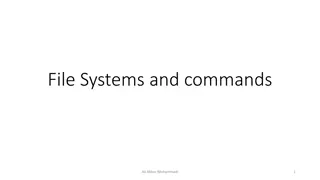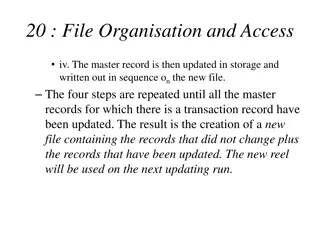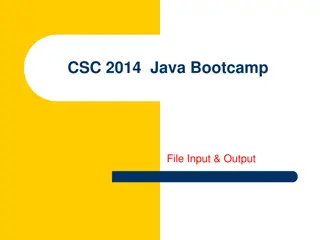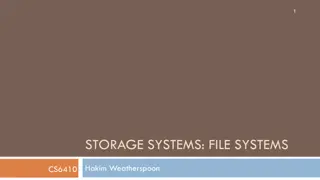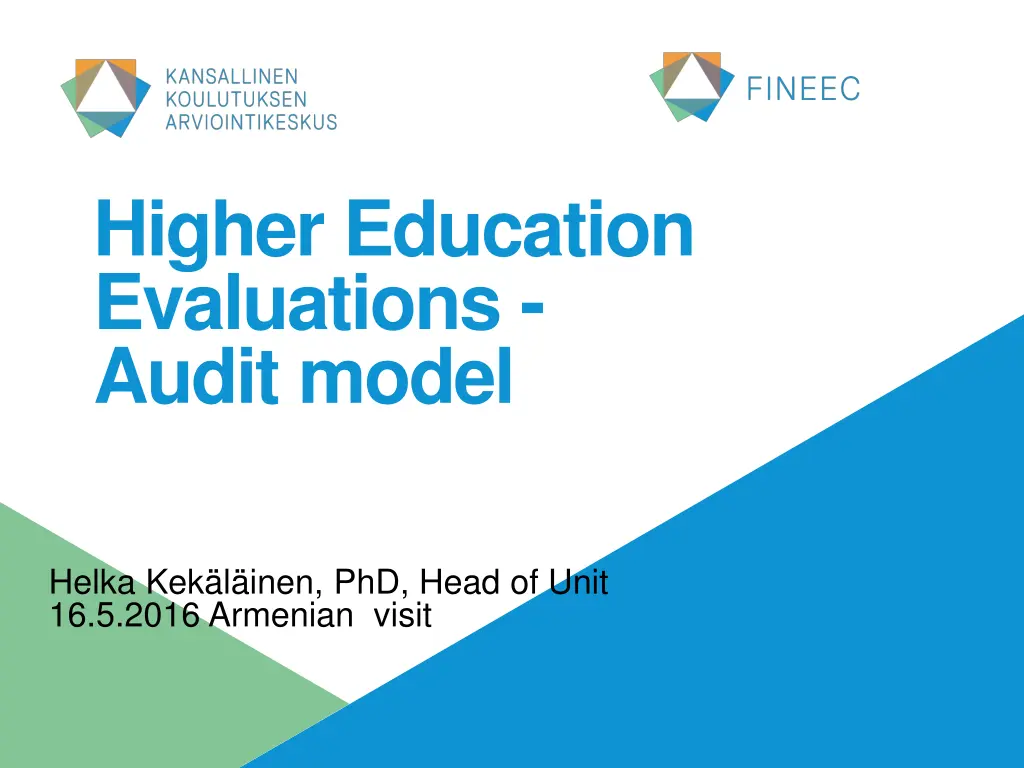
Evaluations of Higher Education and International Activities by FINEEC
Explore the comprehensive evaluations of higher education institutions and international projects conducted by FINEEC, along with their impact on the European Higher Education Area integration. Learn about the quality assurance assessments, funding models, and collaboration efforts in the field of education.
Download Presentation

Please find below an Image/Link to download the presentation.
The content on the website is provided AS IS for your information and personal use only. It may not be sold, licensed, or shared on other websites without obtaining consent from the author. If you encounter any issues during the download, it is possible that the publisher has removed the file from their server.
You are allowed to download the files provided on this website for personal or commercial use, subject to the condition that they are used lawfully. All files are the property of their respective owners.
The content on the website is provided AS IS for your information and personal use only. It may not be sold, licensed, or shared on other websites without obtaining consent from the author.
E N D
Presentation Transcript
Higher Education Evaluations - Audit model Helka Kek l inen, PhD, Head of Unit 16.5.2016 Armenian visit
WARMLY WELCOME TO FINEEC!
EVALUATIONS OF HIGHER EDUCATION BY FINEEC Audits of Quality Systems of HEI`s Universities and Universities of Applied Sciences Since 2005, all the institutions audited at least once Thematic evaluations Study paths and working life co-operation between vocational education and training and professional higher education (ongoing) Subject teachers of Swedish language (ongoing) Evaluations of educational fields Education and training in early childhood education Voluntary Engineering Programme Accreditations (EUR-ACE) 4
OTHER ACTIVITIES OF HIGHER EDUCATION UNIT 2014 - INTERNATIONAL PROJECTS Twinning Project: Empowerment of the Tertiary Level Education of the Republic of Armenia for European Higher Education Area Integration EHEA Twinning Project: Support to the Ministry of Education of the Republic of Azerbaijan for Further Adherence of the Higher Education System to the European Higher Education Area (AZ-ad-EHEA) 5
INTERNATIONAL ACTIVITIES ENQA European Association for Quality Assurance in Higher Education (Board member 2008, Vice-President 2010- ) EQAR European Quality Assurance Register for Higher Education NOQA, INQAAHE international networks for quality assurance agencies EUR-ACE European Accreditation of Engineering Programmes 6
FINEEC AUDITS AND THEIR IMPACT ON HIGHER EDUCATION
FINEEC AUDIT BACKGROUND AND PHILOSOPHY Finland s response to the request of the Bologna process to develop a comprehensive national higher education QA system ( system of accreditation, certification or comparable procedure ) Institutional approach the same model for both higher education sectors (universities and universities of applied sciences) Comprehensive approach covers research/RDI, education and social impact and overall quality management External assessment of internal QA - reflects institutions autonomy and responsibility, and a large measure of trust HEIs are responsible for the quality of their operations Each institution develops its quality system based on its own needs and goals 10
ENHANCEMENT-LED APPROACH Aim to support HEIs in the enhancement of quality and establishment of quality culture by (1) producing information to assist HEIs to develop their activities, and by (2) (2) exchanging and disseminating good practices among other HEIs As a result of the audit, an institution either passes the audit and receives a quality label or is subject to a subsequent re- audit Institutions are neither rewarded for a positive result nor punished for a negative one there are no financial incentives or loss of degree- awarding powers 11
AUDIT MANUAL: PROCESS AND CRITERIA Audits are based on FINEEC Audit Manual (process and criteria) http://karvi.fi/app/uploads/2015/02/KARVI_0215.pdf Full cycle of audits conducted during the years 2005-2012, the second audit round going on (until 2018) Feedback from the audited Finnish HEIs shows that they have been quite satisfied with the audits The model refined four times Well-established and stable procedure Impact studies, institutions feedback and follow-up reports: Improvement of management and feedback systems as well as results of activities, new operational and quality cultures in HEIs 12
AUDIT TARGETS 1. Quality policy 2. Quality system s link with strategic management 3. Development of the quality system 4c) Societal inter- action and regional development work 4. Quality management of the HEI s core duties, incl. essential services supporting these 4a) Degree education 4b) RDI & artistic activities 4d) Optional audit target 5. Samples of degree education (3 programmes) 6. The quality system as a whole 13
CRITERIA USED IN THE AUDIT Audits employ a set of criteria that is based on a scale of four development stages of quality management absent emerging developing advanced The development phase for each audit target is determined individually, including each degree programme sample The audit team can propose that the institution passes the audit if none of the targets are absent and if the quality system as a whole is at least developing 14
AUDIT TARGET 6. THE QUALITY SYSTEM AS A WHOLE TARGETS CRITERIA Emerging Absent Developing Advanced 6.The quality system as a whole The HEI has only individual and unrelated quality management procedures. The quality management procedures do not yet form a functioning and unified system. The quality management procedures constitute a functioning system. The quality management procedures form a dynamic and coherent system. There is no evidence of the procedures impact on the development of the operations. The quality system covers the essential parts of the core duties of the HEI and provides support for the development of the operations. There is evidence that the system has an impact on the development of the core duties. The quality system encompasses some of the HEI s core duties but there is little evidence of the system s impact on the development of the core duties. The quality system covers all the core duties of the HEI and provides excellent support for the institution s overall strategy and the development of the operations. There is clear evidence that the system has an impact on the development of the core duties. The institution s quality culture is only just emerging. The development of the operations is based on an existing quality culture. The institution has a well- established quality culture, characterised by wide participation, commitment and transparency. 15
AUDIT PROCESS Higher Education Evaluation Committee appoints the audit team. Higher Education Evaluation Committee makes the decision on the result. Self- Audit visit evaluation Agreement negotiation Publication of the report Audit team s report and recommen- dation regarding the audit result Concluding seminar at the HEI Compilation and submission of other audit material Quality label valid for 6 years Preliminary time frame for the audit If the HEI does not pass the audit, re-audit in 2-3 years Feedback from the HEI and audit team Next audit in 6 years Follow-up seminar 3 years after the audit 16
AUDIT MATERIAL Basic material Self-evaluation report The report is structured according to FINEEC guidelines The structure mirrors the audit criteria, the length is limited Each chapter ends with a summary table of strengths and areas in need of development, as recognised by the institution Electronic materials Interviews Requested additional material 17
FINEEC AUDIT TEAMS An audit team usually consists of five members In case of bigger institutions, can be up to seven members the two higher education sectors (research universities, professionally oriented HEIs) students working life outside the higher education sector Selected so that they represent Experience and knowledge of the optional audit target 18
AUDIT AGREEMENT FINEEC signs an agreement on the audit with the HEI Audit targets (incl. the optional target) Audit procedure and time frame The national or international composition of the audit team and the language to be used to carry out the audit (Finnish, Swedish or English) Duration of the audit visit (3 5 days) Price of the audit (costs are shared between FINEEC and HEI) Commitment to a potential re-audit The following issues are recorded in the agreement: 19
FINEEC S HIGHER EDUCATION EVALUATION COMMITTEE Committee has 9 members: HEIs, students, working life represented Professor Jouni V lij rvi, University of Jyv skyl /Chair Rector Anneli Pirttil , Saimia UAS/Vice Chair Decides on Audit manual, audit teams and audit outcomes Approves the project plans, planning groups and evaluation teams of evaluations that concern higher education 20
OUTCOME OF AN AUDIT The FINEEC Higher Education Evaluation Committee decides on the audit result on the basis of the proposal by the audit team and on the audit report The task of the Committee is to ensure that decisions are impartial HEIs that pass the audit receive a quality label and are added to the register of audited institutions maintained on FINEEC s website http://karvi.fi/en/higher-education/audits-quality-systems/audit-register/ 21
GENERAL REMARKS ON THE FIRST AUDIT ROUND Nearly one in five audits (18%) resulted in a re-audit decision 14% of the UASs vs. 24% of the universities Feedback from the audited HEIs On the whole, HEIs quite satisfied with the audits; satisfaction remained relatively constant throughout the first audit round UASs slightly more satisfied than universities The management and central administration had the most positive view on the quality work in both higher education sectors 22
HEIS VIEWS ON THE IMPACT OF THE AUDIT Improvement of management systems, strengthening of strategic work Several UASs report on the link between the quality system and the improved results of their activities (regarding, e.g., dropout rate, progression and completion of studies) Improvement of feedback systems (student, working life and alumni) Participation of students and external stakeholders in the development of operations enhanced and supported Dissemination of good practices within and between HEIs More cooperation within institutions between different units and between HEIs, benchmarking activities have increased New evaluation cultures external evaluations now seen as more significant tools in the development (international evaluations utilised at different organisational levels) 23
CONCLUSIONS Audits as enhancement-led evaluations have received wide acceptance Mutual trust Open and supportive communication Audits have contributed to the development of Finnish higher education by Changing quality and operational cultures in HEIs and by increasing cooperation within the whole field of higher education Inclining HEIs to learn from one another and share information and good practices with one another, also between the two higher education sectors mutual understanding and collaboration between the sectors have been enhanced 24


